In a world where cat videos reign supreme, enterprise social media platforms are the unsung heroes of the corporate landscape. These digital powerhouses transform the way teams collaborate and communicate, turning mundane office chatter into engaging conversations. Imagine a place where ideas flow as freely as coffee during Monday morning meetings—sounds dreamy, right?
Enterprise Social Media Platforms
Enterprise social media platforms serve as vital tools for enhancing collaboration and effective communication in workplaces. These platforms facilitate real-time conversations, enabling teams to share ideas and feedback efficiently. By utilizing features like group discussions, file sharing, and polls, organizations can encourage participation and engagement among employees.
Numerous options exist in the market, each offering unique functionalities tailored to business needs. For instance, Microsoft Teams integrates seamlessly with Office 365 applications, promoting productivity and organization. Slack stands out for its user-friendly interface and customizable channels, which foster focused discussions on specific projects.
Security remains a critical consideration for enterprises. Robust governance controls ensure that sensitive information stays protected. Platforms like Yammer provide administrators with tools for managing access and content visibility, maintaining compliance with industry regulations.
Analytics features also offer valuable insights into employee engagement and communication effectiveness. By tracking participation levels, organizations can identify trends and areas for improvement. This data allows leaders to make informed decisions about enhancing team dynamics.
Training opportunities often accompany these platforms to ensure effective adoption. Companies can implement workshops or online tutorials, helping employees navigate the tools confidently. A supportive learning environment contributes to a smoother transition and maximizes the benefits of the platform.
Enterprise social media platforms elevate workplace communication and collaboration. With various options available, organizations can select the tools that best fit their objectives while prioritizing security and employee engagement.
Key Features of Enterprise Social Media Platforms

Enterprise social media platforms offer essential features that enhance workplace collaboration and communication. These tools streamline interactions, foster connectivity, and boost employee engagement.
Collaboration Tools
Effective collaboration tools include messaging, file sharing, and video conferencing options. Instant messaging enables rapid interactions among teams, promoting swift decision-making. File sharing capabilities allow easy access to documents and resources, enhancing project efficiency. Video conferencing tools facilitate face-to-face conversations, necessary for remote work environments. Employee engagement increases when tools integrate feedback functionalities, enabling teams to garner opinions and adjustments in real-time. Such features ensure seamless communication across departments, thereby improving overall organizational productivity.
Integration Capabilities
Integration capabilities play a critical role in the functionality of enterprise social media platforms. These systems connect with various applications, such as CRM software and project management tools. Organizations benefit from unified communication channels that reduce workflow disruptions. Compatibility with existing tools like Microsoft Office or Google Workspace enhances user experience and minimizes training time. Many platforms offer API access, allowing developers to customize features based on specific organizational needs. Such integrations enable companies to create cohesive digital ecosystems, ensuring smooth operations while also maximizing productivity.
Benefits of Using Enterprise Social Media Platforms
Enterprise social media platforms offer significant advantages for organizations aiming to enhance their internal communication and collaboration.
Enhanced Communication
Effective communication occurs through real-time conversations and instant messaging features. Employees share ideas quickly, ensuring information flows seamlessly. Integration with existing tools enhances accessibility, making it easy for teams to connect. Structured channels prevent information overload, allowing focused discussions. Video conferencing capabilities also facilitate face-to-face interactions, reinforcing team connections regardless of location. Emotional intelligence increases as teams engage, fostering a collaborative culture. Security features provide a safe environment for sharing sensitive information, promoting trust across departments. Metrics collected from communication analytics allow leaders to identify improvement areas, ultimately shaping better communication strategies.
Improved Employee Engagement
Employee engagement thrives within enterprise social media platforms due to their interactive nature. Employees feel valued when their input is recognized through feedback features. Gamification elements encourage participation, making communication enjoyable. Recognition programs shared over these platforms highlight achievements, boosting morale significantly. Access to knowledge bases builds a sense of community, as team members find answers collaboratively. Regular updates and announcements keep everyone informed, contributing to transparency. Analytics track engagement levels, helping organizations tailor strategies to meet employee needs effectively. Leaders can implement targeted training to further enhance communication skills across teams, fostering continuous growth and improvement.
Popular Enterprise Social Media Platforms
Various enterprise social media platforms cater to the distinct needs of businesses, fostering collaboration and engagement among employees.
Platform A
Microsoft Teams stands out as a comprehensive solution that integrates seamlessly with Office 365. It features real-time chat capabilities, video conferencing, and robust file sharing. Document collaboration happens effortlessly, enabling teams to work together on projects. Customizable channels enhance organization, allowing users to focus on specific topics or teams. Analytics tools within Microsoft Teams provide insights into engagement and usage patterns, helping leaders refine their strategies. Security protocols ensure that sensitive information remains protected, making it a reliable choice for enterprises.
Platform B
Slack garners attention for its user-friendly interface and extensive customization options. Teams benefit from organized channels that facilitate effective discussions, eliminating unnecessary email clutter. Integration capabilities with numerous applications, like Google Drive and Trello, streamline workflows. Additionally, Slack includes features such as reminders and polls, further enhancing team productivity. Its search functionality allows users to quickly find past conversations and shared files. Security measures safeguard company data, providing peace of mind for organizations prioritizing confidentiality. Engagement tools, including emojis and reactions, create a lively atmosphere, making communication enjoyable.
Challenges and Limitations
Enterprise social media platforms face several challenges and limitations that organizations must address. Security concerns rank high among these challenges, as sensitive company information may be vulnerable to breaches. Organizations must implement robust governance and security measures to protect data on platforms like Microsoft Teams and Slack.
User adoption presents another significant challenge. Employees may resist transitioning from traditional communication methods to new social media platforms. Proper training is essential to facilitate smooth adoption, ensuring team members understand features and functionalities.
Integration issues with existing systems can also hinder effectiveness. Different platforms may lack seamless compatibility with various applications, disrupting workflow. Selecting comprehensive tools with extensive integration capabilities helps mitigate this limitation.
Furthermore, scalability poses challenges as businesses expand. As teams grow, platforms may require additional features and resources to maintain efficiency. Choosing adaptable solutions supports long-term growth, empowering organizations to adjust to changing needs.
Information overload becomes a risk when large volumes of messages circulate within platforms. Users may struggle to filter essential updates from peripheral content. Thoughtful structuring of channels and notifications can alleviate this problem, promoting better focus on critical communications.
Lastly, employee engagement can fluctuate on these platforms. If workers do not find the environment stimulating, they may not participate actively. Incorporating gamification elements and recognition programs fosters a more engaging atmosphere, encouraging collaboration and interaction among team members.
Addressing these challenges enables organizations to maximize the benefits of enterprise social media platforms, enhancing communication and collaboration across teams.

